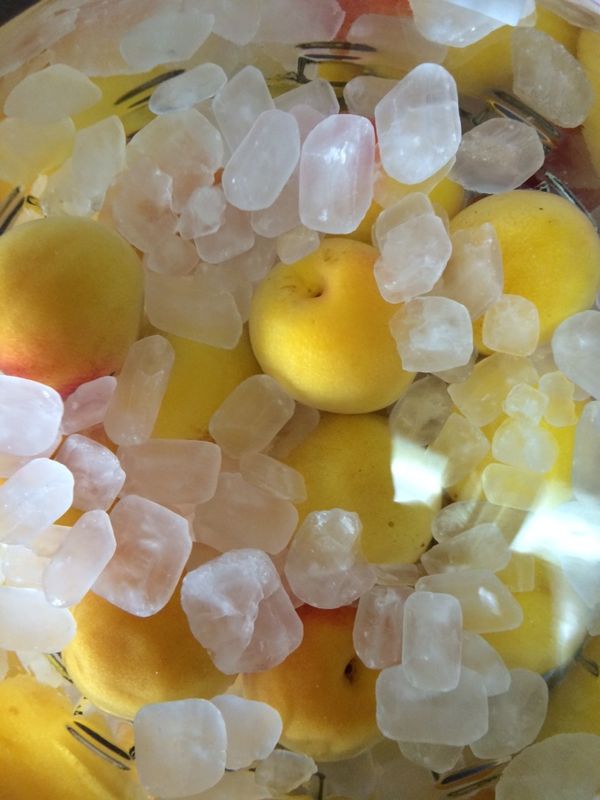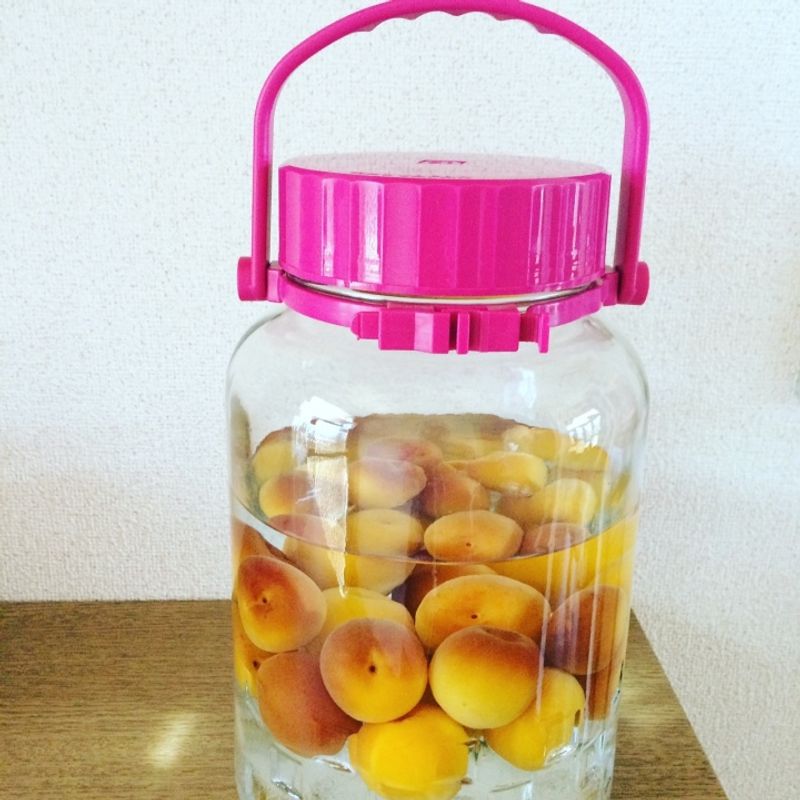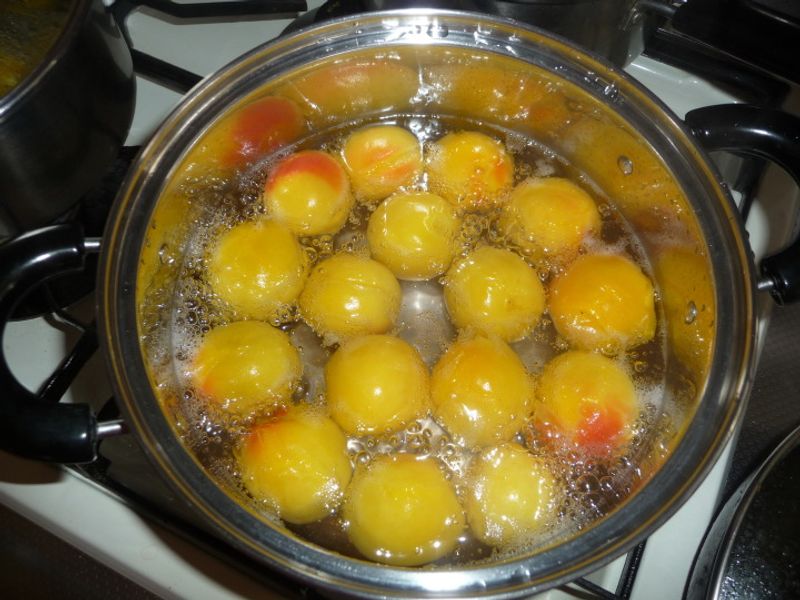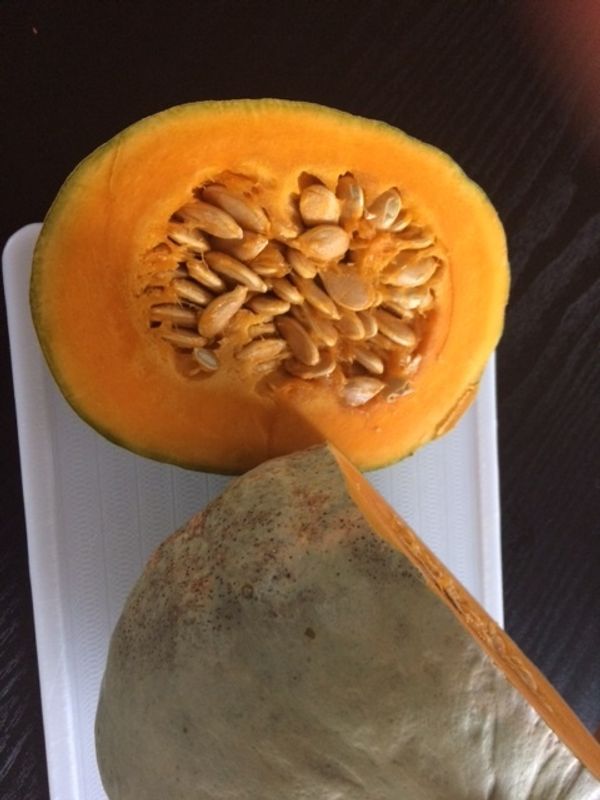Jan 24, 2017
Some Unique Japanese Fruits
Beautiful flowers bloom in the spring months of April and May in Japan. Many types of trees blossom exuberantly. One of them is the ume plum tree.
A month later, ume trees covered with olive shaped green fruits. In June, some Japanese people start making umeboshi, ume wine, and other ume products. I have limited botanical knowledge, to be honest; but the claim that ume "Protects from evil and misfortune" grabbed my attention, therefore I explored more about this intriguing fruit.
Here's how I first noticed it: I was grocery shopping in early summer and noticed a sack of unfamiliar green fruit that said "ume" うめon the label. I asked my Japanese teacher about it, and she told me that ume are Japanese apricot.
I asked what they were used for, and she told me briefly. She said Japanese people make umeboshi, which are salted ume, and eat them like pickles. They are considered healthful. From the way she described it, the process is difficult and time consuming. First, you wash the ume, clean them, and dry them, using a proper system of handling; and then add salt and ume in layers. Wait for 3 months for serving. Umeboshi are great for those with a taste for salt, and is suitable to eat with hot cooked rice.
You may have tried Choya brand wine, an internationally-known Japanese luxury product made from ume. I did some research on the internet on how to make ume wine at home. Then I went to the grocery store where I shop almost daily, and I bought 1kg bag of ume for less than 400Yen. (It might cost more where you are.)

Below is the process I followed to make ume wine. It was a new experience and I enjoyed it.
My steps to make a ume wine:
1. Wash ripe ume and remove stems.
2. Place 200gr rock sugar, add 250 gr ume, add rest of the ingredients in layers.
3. Add 35% white alcohol
4. Seal or close the container tight.

Great experience. Your Japanese friends and neighbors may have ideas for variations and improvements on the recipe. You can buy exotic variations on this drink at the supermarket, such as umeshu made with Okinawan black sugar, which is drunk over ice and mixed with milk. If you don't drink alcohol, you can try umeboshi honey tea as a quick cold remedy: just pour boiled water over an umeboshi and add a spoonful of honey.
Through my research I also discovered how to make ume jam. I tried ume jam first and then ume blueberry jam. I chose ripe ume for jam-making.
1. Wash 1 kg of ume 3 times, and remove stems
2. Boil in hot water to remove peel.

3. After removal of peel, add sugar and simmer. This makes 800gr or less ume jam. (to make blueberry ume jam, add 400 gr blueberries and simmer.)
4. Let it cool down.
Ume jam has a unique rich apricot smell and taste; it is sweet, tangy, and beautiful golden orange in color.
Ume jam with blueberries is tangy and sweet, a synthesis of blueberry and ume taste, and a color like dark ruby.

Yuzu, Japanese Citrus Fruit ゆず
Popular in both Korea and Japan, yuzu is a citrus fruit that looks like an orange, but is pithy and fragrant. It is used mostly for a delicious sweet tea, but also for jams, as flavoring, liquor, and even for vinegar. It tastes a little like lemon and a little like grapefruit, but not really like anything else. Yuzus are sold around December.
How to prepare homemade yuzu preserves for making hot tea:
1. Wash yuzu,
2. Grate into thin slices
3. Add sugar or honey onto yuzu in a jar to preserve as jam. Then, in the chilly wintery season, you may drink honey tea with yuzu in hot water. It is a good source of vitamin C.
Kabocha かぼちゃ Squash
This Japanese squash variety includes vitamin C, potassium, calcium and more in its rich nutritional profile. This is a sweet, pumpkin-like squash. However, it is much sweeter and a brighter, deeper orange color than pumpkin or any other squash common in other countries. Japanese often eat it simmered as nimono; but it also makes an excellent creamy, sweet soup with butter and apples.
Kabocha apple soup:
1. Wash and peel 250 grams kabocha squash, then boil for 5 minutes and blend in a food processor.
2. Cut up one medium apple and blend together with the squash. You can add a dash of cinnamon or nutmeg.
3. Dice up 20 grams of onion and saute in 20 grams of Hokkaido butter.
4. Add the pureed squash and apple mixture to the sauteed onions and simmer in the pan for three to five minutes.

These are just some of the unique fruits that Japan offers, but I have seen many other tempting fruits and vegetables around the Kanto area. Apple(りんご)orchards are plentiful in Gumma, where I live. Strawberry (いちご) farms yield multiple harvests each year, including one in winter. Japanese Kyoho grapes (ぶどう) are much bigger than table grapes and bursting with sweetness and flavor. Fruits in Japan may be a little pricier, but they are often bigger and usually much better in quality. Wherever you are in Japan, it's worth it to try the familiar and unfamiliar fruits that each season brings.



4 Comments
JapanRamen
on Jan 24
Oh I absolutely adore ume wine!!!!
KamaT
on Jan 27
I like the sound of the Yuzu, Japanese Citrus Fruit the best!
Ooray2775
on Jan 30
@Jackson Thank you.
Ooray2775
on Jan 30
@Tomuu , yuzu tea is geat for winter. Starbucks had yuzu tea last month.